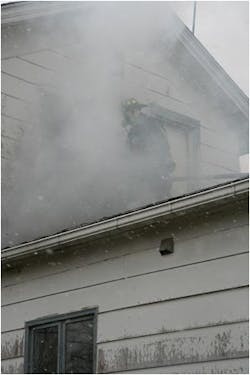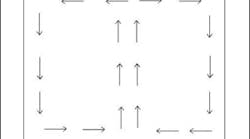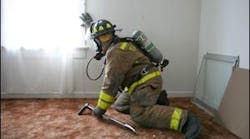High Risk/High Reward - Searching for Life on the Fireground - Part 3
This article is the last in a series of articles focused on considerations for primary search.
The search of fire buildings can be one of the most rewarding actions taken on the fireground, but it can also be the most hazardous duty performed. Searches for the rescue of trapped occupants are often performed under the most adverse conditions where a matter of even seconds can mean the difference between success and failure.
Gaining access to bedrooms in residential fires is a high priority, especially during sleeping hours. It is often easier and quicker to find bedrooms from reading the building on the exterior as opposed to looking for them from the interior under hostile conditions.
Many times, due to fire conditions, the only option a firefighter may have at a successful rescue is the procedure of Vent, Enter, Search or VES. This technique can be carried out when access to a particular room is not attainable through ordinary routes because of fire conditions. It can also be utilized when conventional entrance ways, such as hallways and stairs, to parts of the building are blocked by firefighters working to control the fire.
Ventilation and Entry
VES is an extremely high risk search technique that allows firefighters to search beyond fire conditions, often times prior to a hoseline being put in place. It is considered an advanced firefighting skill and should only be carried out by well trained and experienced firefighters. It is important to remember that "opening" the structure can increase the fires intensity and draw conditions towards the opening. Because of this, once the window is broken and cleared, the firefighter should give the smoke a chance to lift and the fire to light up prior to entry.
Prior to entering the room, the tip of the ladder (if using a ladder) should be placed at or just below the windowsill to facilitate entering as low as possible to the floor, out of hostile conditions. This also enables the ladder as a means for a rapid egress if needed. If the window being entered is on the first floor or street level, the firefighter will need to make the proper provisions to enable themselves to get up and over the windowsill. This situation can be very challenging as a ladder will not be able to be properly positioned unless it is a small, adjustable folding type which is not commonly carried on fire apparatus.
Many times a firefighter may not be able to simply pull themselves up and over the sill and may need to use a tool as a step or a partner to help push them up high enough for entry. Whatever entry method is chosen though, it is imperative that the entry firefighter make certain that they can exit the room to safety, without delay, if needed. Prior to entry, the floor just below the window should be probed for both stability as well as the presence of a victim.
Performing Search Operations
Once inside, the firefighter should stay low and attempt to close the door to the room immediately. This action can isolate the smoke and fire conditions in the room, and avoid drawing fire to the ventilation opening that they created by removing the window upon entry. If conditions are bad and the door is not visible, it can most times be found on the wall directly opposite the window. Architects traditionally design buildings with the door to a room being across from a window to maximize the ease of natural ventilation in the building.
It is also a good idea for the searching firefighter to take a quick look or probe just outside the door before closing it. It may be possible to find a victim that was trying to escape, who collapsed in the hallway. Again, this should be done without leaving the room originally entered to avoid disorientation. The room should be searched expeditiously with the firefighter returning to the window originally entered. At no time should a firefighter move beyond the room that they originally entered to search. Doing so may lead to disorientation and fire conditions cutting them off from their means of egress.
They should descend the ladder or exit the window and move to the next room to be searched while repeating the same procedure. VES is not a substitute for a conventional interior search because it obviously will not cover all areas.
The search for viable, trapped occupants is one of the very few times when firefighters should be allowed to be subjected to high risks while operating on the fireground. Seconds can literally mean the difference between life and death for these occupants.
VES is a technique that, if utilized in the correct manner under the proper conditions, can help to overcome the obstacles standing in the way of a successful rescue. It can also get firefighters in a lot of trouble very quickly if they are not skilled in the areas of laddering, forcible entry, search, fire behavior and self survival - all basics of our profession.
We must know our limitations and understand the principles of risk/benefit analysis when committing to action. The public expects nothing less than excellence when they dial 911 - are you ready to meet that challenge?
JEFFREY PINDELSKI, a Firehouse.com Contributing Editor, is a 18-year veteran of the fire service and currently serves as a battalion chief with the Downers Grove, IL, Fire Department. Jeff is a staff instructor at the College of Du Page and has been involved with the design of several training programs dedicated to firefighter safety and survival. Jeff is the co-author of the text R.I.C.O., Rapid Intervention Company Operations and is a revising author of the 3rd edition of the Firefighter's Handbook. He has participated in the first edition of Training & Tactics Talk and Training & Tactics Talk: Training Philosophies on [email protected]. To read Jeff's complete biography and view his archived articles, click here. You can reach Jeff by e-mail at [email protected].








